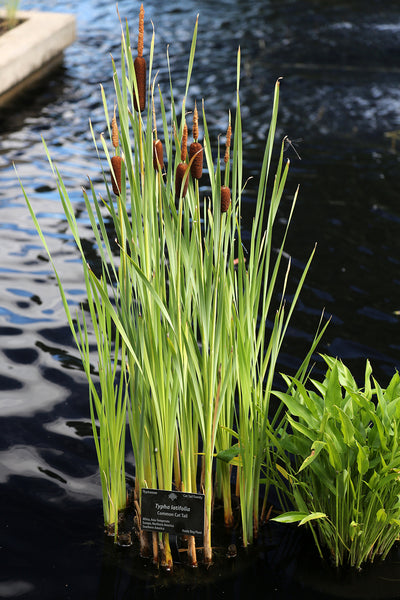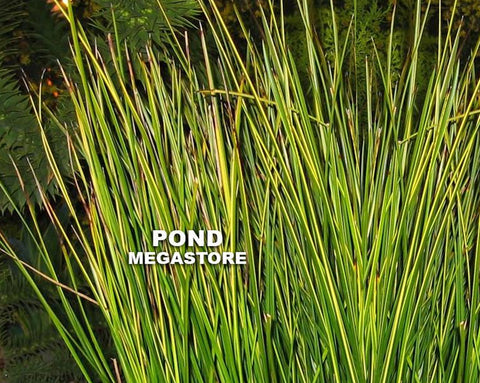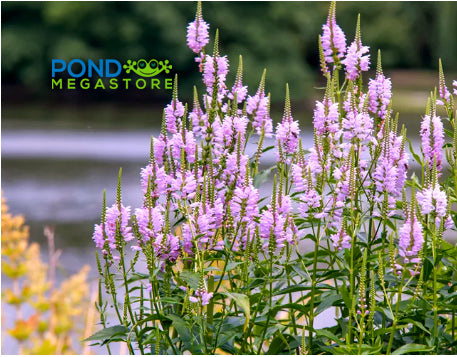Common Cattails, also known as cat tails, cat tails plant, cattail plant, or bulrush, are an attractive pond plant with stalk-like, flat, green foliage and brown catkins in early to late summer. Helps with soil erosion on lake banks and banks of natural ponds. Provides cover for wildlife and can grow 4-6 feet tall, depending on conditions. One of the most common pond plants found in natural ponds, streams and marshes. Common Cattails may provide food and shelter for wild waterfowl.
Height Grows 8 - 10 feet or taller
Width 2 - 4 foot spread
Sunlight Requirements Full sun to part shade
Moisture Requirements Moist soil or shallow water
Bloom Time Blooms in summer, followed by brown catkin fruit later in season
Zone 3 - 10
Common Cattails grow well in standing water and in marshes or wetlands. Cat tails plant is great for naturalizing in areas where standing water and poor drainage are a problem. Cat tails plant tolerates occasional flooding as well as periods of drought. Plant in soil with up to 8 inches of water above the roots in full sun to part shade. Great for soil erosion on banks, (caution--roots go deep and may become invasive). Cattail plants spreads by creeping rhizome as well as self seeds. Also called cat tails, cattail plants, Cat-o-nine-tails and cattail plants. Common Cattails produce more starch per acre than any other plant and were considered being used as a crop after WWI. They produce more starch per acre than rice, potatoes, or yams.
Fun Fact Typha (TYE-pha) is the Greek word meaning 'marsh'. Common Cattails are often found in marshes or wetlands. The word Latifolia is the Greek word for 'leaves'.
When you consider buying cattail do note they are generally fast growing in heavy loam soil or natural ponds and lakes. They can overgrow areas and are very hard to get rid of. They are great for phytoremediation and uptaing heavy metals and contaminants in the water which is their primary funtion. Cattails are also great at preventing ponding in low lying areas which in turn keeps mosquitos from breeding in those ditches and low lying areas.








